Phosphoric Acid Production

Phosphoric acid production typically involves the treatment of phosphate rock with sulfuric acid to produce phosphoric acid. The phosphoric acid manufacturing process may vary depending on the intended application and purity requirements of the phosphoric acid.
It is a vital step in the manufacturing of fertilisers, detergents, food and beverages, pharmaceuticals, and other products. The production process involves several stages, including extraction, purification, and concentration, often carried out in specialised chemical plants under controlled conditions.
Phosphoric Acid Production
Phosphoric acid is produced primarily through two methods: the wet process and the electric furnace process.
The phosphoric acid wet process involves sulfuric acid reacting with phosphate rocks to produce phosphoric acid and gypsum. This method yields products contaminated with impurities, meaning that the phosphoric acid manufacturing process is primarily to make fertiliser.
Phosphoric Acid Wet Process
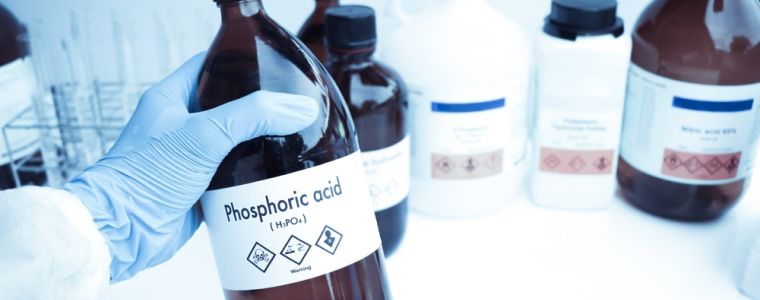
The phosphoric acid wet process accounts for around 95% of world production. In the wet process, sulphuric acid (H2SO4) reacts with natural phosphate rocks to produce H3PO4 and calcium sulphate (CaSO4), commonly known as gypsum.
Products from the phosphoric acid wet process are primarily used in the manufacture of fertiliser as they are contaminated by impurities such as sulphates, fluorides and fluosilicates. There are several variants of the wet process, with the main differences between them being operating temperature, higher temperatures are more demanding of the materials used.
The electric furnace process yields purer phosphoric acid used in various industries.
Both methods result in highly corrosive substances, particularly at high temperatures and concentrations, due to inherent impurities.
Electrical Furnace Process
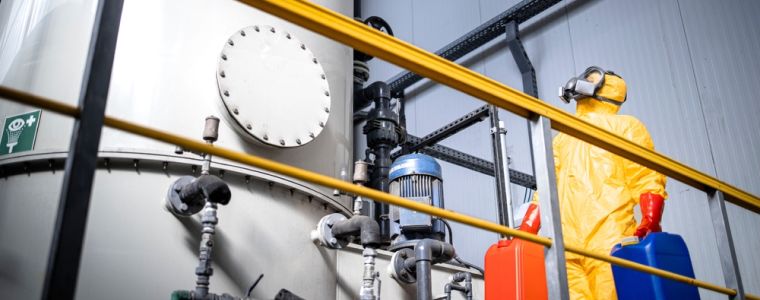
In terms of phosphoric acid production, the electrical furnace process produces purer products which are used to manufacture soaps, water conditioning, food-grade additives etc.
Due to their non-oxidising nature and inherent impurities, phosphoric acid and its derivatives are highly corrosive, especially at high temperatures and concentrations. Their corrosivity increases drastically in the presence of ferric salts and halide contamination.
Phosphoric Acid Production: Byproducts
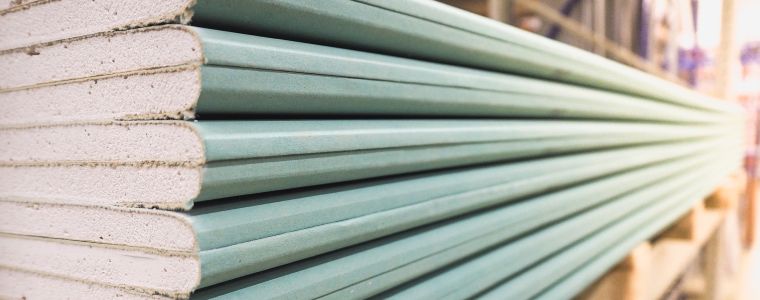
The primary byproduct of the phosphoric acid manufacturing process is calcium sulfate, commonly known as gypsum. During the production of phosphoric acid through the wet process, sulfuric acid reacts with phosphate rock to produce phosphoric acid and gypsum.
Gypsum is a white, powdery substance that is often used in various industries, including construction, agriculture, and manufacturing.
Other byproducts may include impurities such as sulfates, fluorides, and fluosilicates, depending on the specific manufacturing method and source of phosphate rock.
What Products Contain Phosphoric Acid?
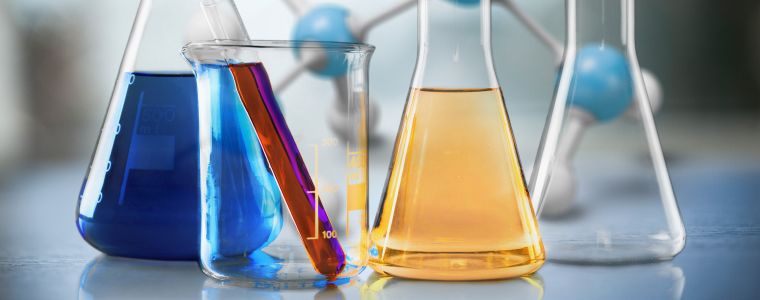
As the third largest commodity mineral acid, phosphoric acid (also known as orthophosphoric acid) and its derivatives are used in various products, ranging from fertilisers and food additives to pesticides and plasticisers.
- Phosphoric acid (H3PO4) – a component of fertilisers (80% of total use), detergents, and many household cleaning products to prevent mould and bacteria in sugary foods.
- Phosphorus oxychloride (POCl3) – is used as a chemical intermediate to produce various products.
- Phosphorus tri-chloride (PCl3) – is used in petroleum additives and textile finishing, and to make other chemicals, pesticides, dyestuffs, catalysts and plasticisers.
The phosphoric acid manufacturing process involves several stages, including extraction, purification, and concentration, often carried out in specialised chemical plants under controlled conditions.
Alloys Used in Phosphoric Acid Production
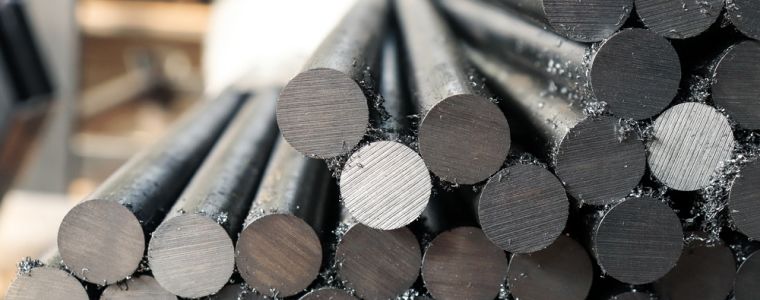
Phosphoric acid produced by the wet process must also handle sulphuric acid and may contain significant amounts of sulphate, fluoride and fluosilicate as compared with the furnace process which contains virtually zero amounts of these.
Alloy selection criteria include:
- Concentration, temperature, and velocity of the acid
- Aeration of the acid
- Presence of contaminants in the specific manufacturing method
- Equipment life-cycle costs
Most applications rely on stainless steel or nickel alloys. Straight chromium grades are generally not suitable, however higher levels of chromium and molybdenum increase phosphoric acid resistance.
If fluorides or chlorides are present in hot plant phosphoric acid solutions, corrosion of the stainless steels may be increased considerably. If solutions contain nitric acid, corrosion will be reduced.
- Nickel-copper grade alloy.
- Offers significant resistance to pure phosphoric acid, with corrosion rates of less than 0.05 mm/y between 10-100% concentrations up to 80oC
- At higher temperatures, corrosion will increase considerably and any addition of oxidising salts and corrosion will become significant.
- Nickel-chromium grade alloy.
- Resists phosphoric acid at room temperatures but corrosion rates increase significantly with temperature.
- Nickel-chromium-molybdenum-niobium grade alloy. Displays supreme resistance in the presence of significant magnitudes of chlorides and fluorides.
- Alloy 625 provides great performance in a solution of 25% phosphoric acid at boiling point.
- Real-world tests show nominal rates and no localised corrosion in evaporating wet process phosphoric acid.
- A solution-annealed nickel-molybdenum-chromium alloy with the addition of tungsten.
- The most universally corrosion-resistant material available today.
- The high molybdenum and chromium contents allow the alloy to perform in oxidising, non-oxidising and mixed acids media, whilst exhibiting outstanding resistance to pitting and crevice corrosion attack.
- A nickel-iron-chromium grade with the addition of molybdenum and copper.
- Alloy 825 offers superb resistance to reducing environments such as those containing sulphuric and phosphoric acids.
- The molybdenum prevents resistance to pitting and crevice corrosion.
- The alloy’s chromium content promotes resistance to a variety of oxidising substances such as nitric acid, nitrates and oxidising salt.
- Significant exposure to chlorides and fluorides may cause pitting of alloy 825.
- A super-austenitic nickel-chromium-molybdenum-nitrogen stainless steel.
- AL-6XN® alloy is resistant to phosphoric acid concentrations above 45%.
- In boiling 20% phosphoric acid solution AL-6XN has a corrosion rate of 0.006 mm/y as compared for example with alloy 316L with a corrosion rate of 0.02 mm/y.
Alloy 316L
- An austenitic chromium-nickel-molybdenum stainless steel.
- Offers excellent resistance to phosphoric acid at <40% concentrations and good resistance at 40%-100% concentrations.
- Corrosion will increase in the presence of chlorides or fluorides.
Wet process phosphoric acid (WPA) can be aggressive towards stainless steels, depending on the range of impurities that the acid contains. This is of particular concern in bulk handling and transportation of raw phosphoric acid.
Any increase in temperature, and /or the presence of chlorides, fluorides and sulphuric acid impurities increase the risk of corrosion. The more pitting-resistant steel grades should be considered when these impurities are known to be present and specialist advice is needed to optimise grade selection.
Phosphoric acid production is a vital industrial process used in manufacturing fertilisers, detergents, food, and more. This process demands corrosion-resistant alloys due to the acid’s highly corrosive nature, particularly at elevated temperatures. Careful alloy selection is essential to ensure optimal performance and longevity in phosphoric acid production equipment. For further advice and support, get in touch today.
————————————————————————————————————————–
AL-6XN® is the registered trademark of Allegheny Ludlum Corporation.
